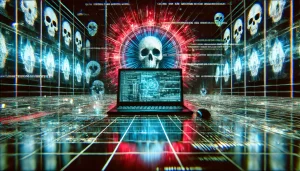Since the end of 2011 and in the context of the global economic forum, it’s began to talk about the 4th industrial revolution and digitization of productive environments, developing a main feature on an intelligent industry, one of its focus is to generate greater adaptability to the production needs to customers more and more tailored to each, as well as improving resource efficiency marked by the convergence of Internet-based technologies among which I can mention: Artificial Intelligence, Internet of Things (IOT), Robotics, Nano technology, 3D printing, among others.
The technological development of Industry 4.0 is advancing at giant steps, according to the Moore’s Law, every 10 years the data processing capabilities are doubled, this without considering the arrival of the quantum computer that further accelerates the shift towards the digitization of the environment in which we live, in the beginning it was thought that in 2030 it would achieve that we know as the singularity , where people could not identify whether they are communicating with a system or a real person, in this way people must adapt quickly to this new way of life with changes introduced silently, for example by gradually adding new autonomous and intelligent cashiers in supermarkets that act simultaneously with traditional cashiers, while people get used to the new smart model of supermarket self-care , and in the future they will be able to operate in 7X24 mode, changing the rules of the supermarket business game, if it happens with the fueling stations increasingly with more self-care.
In this sense, the digital transformation of Industry 4.0 not only goes through technologies, but also largely passes through people and society as a whole. In countries like Chile, where even few people have access to training that allows them to migrate from these automated jobs to other jobs through their skills and could have an impact in the short to medium term. The bet considers it should be to give the necessary tools to people that allows coexistence with robotic systems and work them with a greater degree of specialization, ensuring the future of work.
Alongside, the above the market also became more demanding for companies because of the digital transformation itself and a decrease in the production cost, which generates high competition. Less digital companies had to start thinking about stepping on lesser-known or more unpredictable terrain, where digitization and differentiation is not an option, If not a survival necessity in a hostile environment, that many began to recognize as the VUCA environment.
Digitize to resist in a VUCA environment
VUCA is an English acronym that brings together the increasingly unpredictable characteristics of today’s world: Volatility, Uncertainty, Complexity and Ambiguity. It is a concept that was born in the 1990s in the military academies and which gained relevance in the wake of the 9/11 attacks where the US military had to adapt to any situation on hostile warfare. Today the companies, in the process of a digital transformation are beginning to use VUCA to adapt permanently to the new market scenarios or businesses with increasingly customers demanding of goods and services tailored to each.
In this environment VUCA product digital transformation of Industry 4.0, we get SARCOV-2 or better known as COVID-19, pushing society very hard to implement urgent measures that we could never warn, where the confinement of people was key to exploiting telework and remote meetings to coordinate teams and companies, literally this new scenario pushes for digitalization forced all sectors of society.
The perfect digital storm: Industry 4.0+VUCA+COVID19
The combinatorial of these realities, I called the perfect digital storm, which results in accelerated digitization in all aspects of people and business life, where to cope with the hostile environment, adaptations must be developed in families and businesses in short periods of time, where it is recommended to develop new skills that are previously desirable and now necessary as a vision of the environment, understanding of the processes beyond our specialty, clarity in messages in the work teams and agility in organizations, developing empathy and much communication with the members of the work teams distributed in many places in telework and with the stress burden of family activities producted from the confinement of children also at home.
For everyone it has been a very strong change in different areas of life, for example, my father is a state professor in Physics entitled in 1978 and must adapt his work to teach digital classes to his students with methodologies never tested. This is a radical and unprecedented change, since the origin of formal education in Chile almost 300 years ago had never been thought of this way, and now it should have done in a matter of days.
Likewise, the confinement due to the pandemic has opened the door to new opportunities for adaptation to the accelerated digitization of products and services, for example the sale and dispatch of products or new businesses related to telework, but also opened the door to new cybersecurity risks, which companies and individuals must face in order to develop with greater focus the cybersecurity capabilities at the height of these new digital changes in the social, business, family, educational, commercial and industrial environments.
How new cyberthreats affect people in accelerated digitization
Current circumstances, where people are more exposed and vulnerable due to increased internet use, have provided an ideal scenario for cybercriminals on multiple fronts.
The situation caused by the coronavirus crisis has led cybercriminals to make a greater number of scam attempts through digital channels. According to Google in Chile (publication www.latercera.com), phishing has grown by more than 90% since the Covid-19 crisis began. The POI (Chilean Investigation Police) warns of an increase in trafficking in child pornography associated with Gromming after confinement, registering more than 100 complaints in the first months after confinement alone.
On the other hand given the confinement with children at home, there have been an increase in game downloads on mobile phones, where some of these games use permissions that do not correspond to them and give them access to different options or personal data on the people phones, such permissions are often not necessary for the use of the same game or application and should be supervised by parents or adults.
Now more than ever, it is essential to recognize these threats and to take extreme precautions when using internet services to avoid being victims of deception and attacks that may jeopardize our information and our loved ones.
How New Cyberthreats Affects Companies in Accelerated Digitization
The coronavirus crisis has brought changes in consumer habits that cause the business sector to have to reinvent itself in a new environment of VUCA uncertainty, which also accelerates digitization and active the remote mode of work in most organizations, which brought with it a series of initial disruptions in the operational aspects, certainly not easy to accept it, the truth is that after the Pandemic no organization, company or industry will be the same as it was before and the Telework arrived to stay among other things.
Companies have also been affected by the rise of cyberattacks by taking advantage of the new remote reality of work teams.
According to various Cybersecurity consulting organizations and Antivirus providers such as NIST – CIS – Kaspersky among others, the largest number of cyberattacks that are being recorded during the coronavirus pandemic are mainly phishing and smishing. Both with the same modus operandi, impersonate an official body and attempt to redirect the user to a fake web page to enter their personal data into it or download malicious files.
Companies and organizations should be more attentive than ever to develop or implement the necessary capabilities in the different areas of cybersecurity action, in particular CIS (Center for Internet Security) recommends in times of pandemic ensure some basic controls depending on the size of the organization as well as the assets to protect, to mention some, I would say for example, strengthening remote access to corporate networks with supervised and controlled VPNs in access controls, and monitor the process of patching and segregation of environments, as well as strengthening backup and recovery processes to potential cyberattack successes. It could only add at the end of everything not least about raising awareness among organizations’ employees and work teams to understand and encourage cybersecurity to be everyone’s responsibility and must actively collaborate with it, as the weakest link in cybersecurity always ends up remaining in people.
Julio Francisco Naranjo Figueroa
Industrial Engineer
Civil Engineer in Computer Science
Master in Cybersecurity University of Barcelona
https://www.linkedin.com/in/julio-naranjo-852b4457/
Referenced bibliography:
Publication August 17, 2020: PDI warns of increased trafficking of child pornography in pandemic and rise in complaints for «grooming» after lack of definition
Source: Emol.com – https://www.emol.com/noticias/Nacional/2020/07/08/991281/PDI-grooming-pornografia-infantil-pandemia.html
Source: NIST Publication August 14, 2020: https://www.nist.gov/coronavirus
CIS source, https://www.cisecurity.org/
More’s Law: https://es.qwe.wiki/wiki/Moore%27s_law
Publication 17 April 2020: The other pandemic: Google discovers 18 million fraudulent emails related to coronavirus daily
Source: latercera.com https://www.latercera.com/que-pasa/noticia/la-otra-pandemia-google-descubre-a-diario-18-millones-de-correos-fraudulentos-relatados-al-coronavirus / ZKXMBBXLGNBRNBX7R5F2HDTOP4




